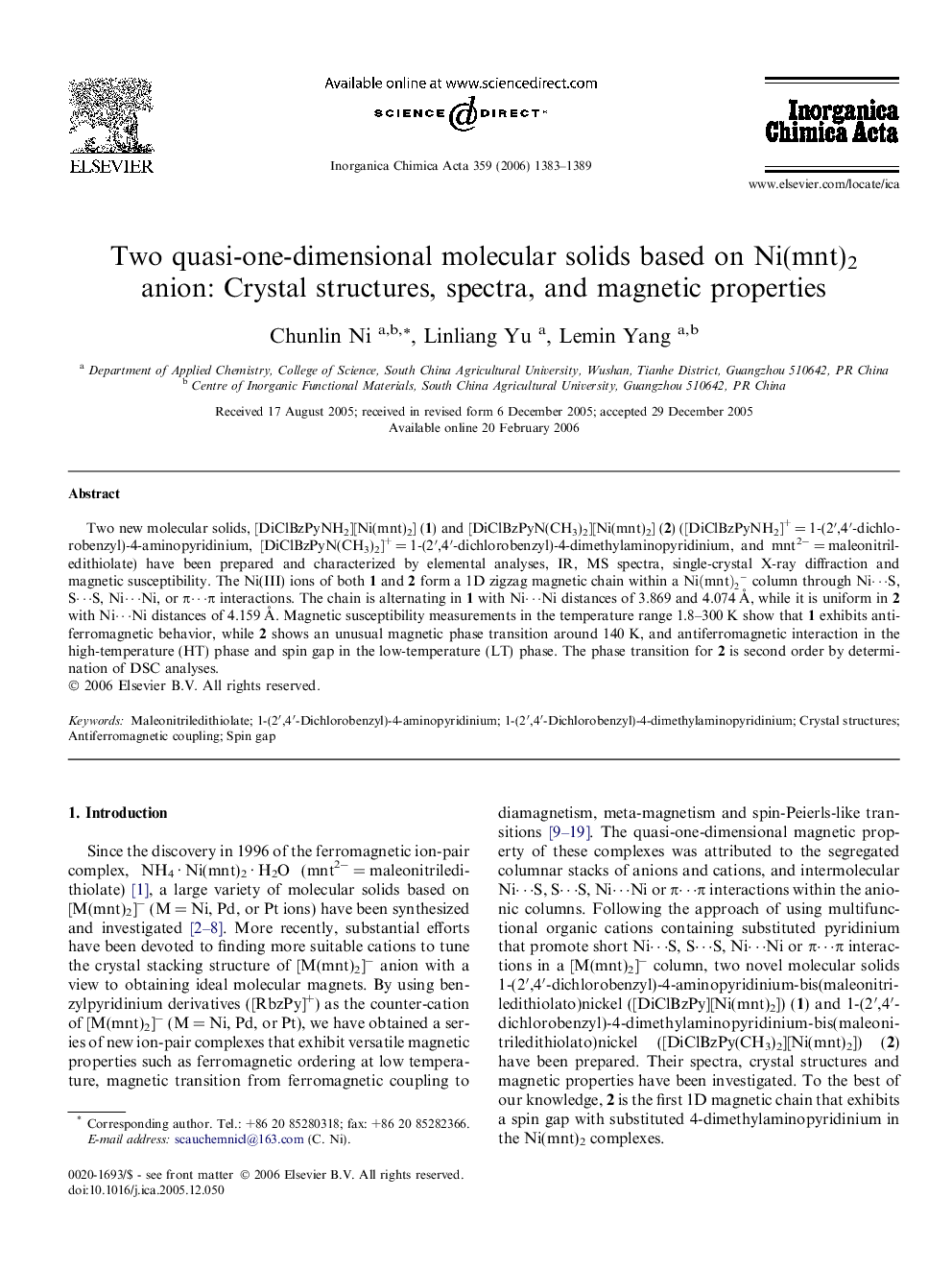| Article ID | Journal | Published Year | Pages | File Type |
|---|---|---|---|---|
| 1313070 | Inorganica Chimica Acta | 2006 | 7 Pages |
Two new molecular solids, [DiClBzPyNH2][Ni(mnt)2] (1) and [DiClBzPyN(CH3)2][Ni(mnt)2] (2) ([DiClBzPyNH2]+ = 1-(2′,4′-dichlorobenzyl)-4-aminopyridinium, [DiClBzPyN(CH3)2]+ = 1-(2′,4′-dichlorobenzyl)-4-dimethylaminopyridinium, and mnt2− = maleonitriledithiolate) have been prepared and characterized by elemental analyses, IR, MS spectra, single-crystal X-ray diffraction and magnetic susceptibility. The Ni(III) ions of both 1 and 2 form a 1D zigzag magnetic chain within a Ni(mnt)2- column through Ni⋯S, S⋯S, Ni⋯Ni, or π⋯π interactions. The chain is alternating in 1 with Ni⋯Ni distances of 3.869 and 4.074 Å, while it is uniform in 2 with Ni⋯Ni distances of 4.159 Å. Magnetic susceptibility measurements in the temperature range 1.8–300 K show that 1 exhibits antiferromagnetic behavior, while 2 shows an unusual magnetic phase transition around 140 K, and antiferromagnetic interaction in the high-temperature (HT) phase and spin gap in the low-temperature (LT) phase. The phase transition for 2 is second order by determination of DSC analyses.
Graphical abstractTwo new molecular solids, [BiClBzPyNH2][Ni(mnt)2] (1) and [BiClBzPyN(CH3)2][Ni(mnt)2] (2) ([BiClBzPyNH2]+ = 1-(2′,4′-dichlorobenzyl)-4-aminopyridinium, [BiClBzPyN(CH3)2]+ = 1-(2′,4′-dichlorobenzyl)-4-dimethylaminopyridinium, and mnt2− = maleonitriledithiolate) have been characterized structurally and magnetically. Complex 1 exhibits antiferromagnetic behavior, while 2 shows an unusual magnetic phase transition around 140 K, and spin gap in the low-temperature phase.Figure optionsDownload full-size imageDownload as PowerPoint slide
